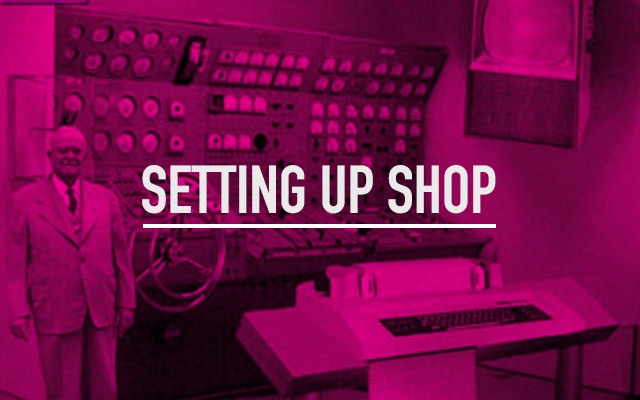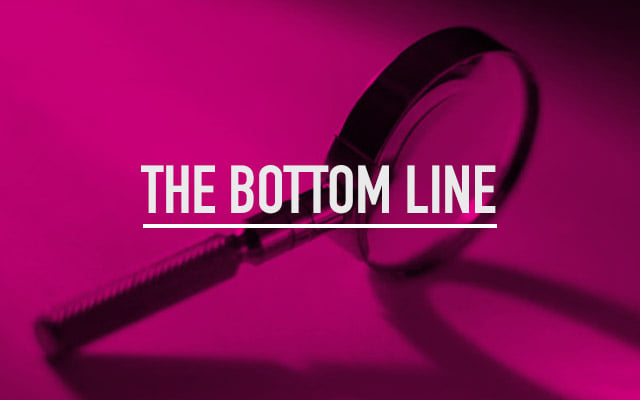This article was contributed by Lucy Barret.
None of us can deny that being free to do and be whatever we want, holds a lot of appeal. Why else would at least 35% people on any continent choose self-employment?

The Pros & Cons of Freelancing

Freelancing is a dream-come-true, especially for those in the creative space. Flexible hours, comfort, creative control, and choice of clients… really, what’s not to love about freelancing? See here pros & cons of both.
Theoretically, it sounds ideal. But the real world is a harsh mistress. Being a self-employed designer can quickly turn into a waking dream of horrors. How much work-weight can you take without forgetting to eat or sleep? How are you going to get clients since you’re awkward and anti-social? How are you managing your income? Do you even have an income?
That’s the part of the iceberg that lies beneath the water.
You’re now making a leap from being on someone’s payroll to being responsible for your own backside. There’s stuff to do. Drawing up contracts, setting up space, marketing and advertising, looking for work, and that’s way before you get your first project.
So to keep your freelancing dream-ship from sinking to its doom, here’s a checklist of things you should take into consideration before making the plunge.
Before you go Full Time Freelance

1. Do Your Research
Take it seriously. Just because you’re a freelancer doesn’t mean you get to lounge around on the sofa wearing a shirt that hasn’t been washed in, oh, weeks. You are an entrepreneur. Act like it.
Get a realistic idea of what you’re getting into and what you’ll need. How much would it cost? Consider domain, server space, software and stock subscriptions, rent and upkeep on living arrangement (which will probably double as your office space), legal requirements, and more. See these expenses for m
Make an informed decision.
2. Manage your Money
Yes, even before you start making any of it. You have to look up where a significant chunk of your money will go.
Tools like Mint and the friendly little Mvelopes will make budgeting easier, while Less Accounting and Zoho Books will let you manage your taxes, invoices and cash flow like a pro.
This is so you don’t binge on expenditure and then spend the foreseeable future living on dry bread sandwiches, in a hovel without water or electricity.
3. Manage your Time
If a burning hatred of work-hours is your motivation for going the solitary route of self-employment, you’re probably better off at a job. It takes some serious time and effort to get your freelancing off the ground.
That’s not to say you should take on so much work you don’t have 5 minutes to take a dump. It’s unhealthy for your body, relationships, and quality of work.
Create a practical time schedule and stick to it. Use tools like Tick to balance productivity with peace of mind. Use email tools & hacks. This is to prevent both burnout and wanton laziness.
4. Make a Smooth Transition
You may want to quit your day job now and begin freelancing today. But rushing headfirst into it is asking for trouble.
Instead, take your time checking out all of the above (and below) so that you’re not needing work or money when you finally make the transition. Ease into it, moonlight then take the plunge only when you’re ready.
Setting Up Your Shop…

1. Le ‘Office’
More than just a business card, your website is the digital equivalent of a brick-and-mortar office. You may work from Nowhere, End of the Earth, but your website can still work wonders to ‘bring’ you clients.
A URL of your own, a collection of your previous work, a showcase for your best projects, a bit about yourself can go a long way to solidify your credentials as a designer.
Make sure you have a contact form so clients can easily contact you.
2. Le ‘Voix’
A lot of us hated writing mid-term papers, but writing for your own blog can be fun and lucrative.
Your blog posts can help you gain recognition and reputation as an ‘expert’ in your field. If you know what you’re writing about and if you’re writing it well, people will read it and heed it. Then they’ll look up to see who wrote it.
This builds up creditability and authenticity. It tells people you know what you’re doing. You can land some really good clients that way.
3. Le Marque
You know what, in this age and time? You are not your job. Your job is You, if you’re good at it.
Branding isn’t a fancy word marketers like to throw around. You can define your image and build credibility with little things that matter. You can speak without saying anything. That’s the subtle power of branding.
Pick a thought, any thought. You want to be seen as clean / efficient / organized? Or perhaps as raucously, rapturously bold and beautiful as possible? Anything you wish to be seen as, incorporate that in your logo, your website’s name, the way you write your personal info, heck, even your picture.
It gives potential clients a sense of who you are, so the one rule you should follow is be personable and polite. The rest is open to splurges of your personality.
Strutting your Stuff…

1. On Social Media
Just because it’s good doesn’t mean it can’t get better. Think above Facebook and Twitter and get in on the action with Dribble and Pinterest.
Show what you can do on Behance and Cargo (especially awesome for beginners). You can also become a part of community to share your work with other designers and get their opinion. The more places you are, the more places you can be seen.
2. In the Real World
Yes, you can advertise locally for services you provide on the web. Why so incredulous?
Advertising in the real world will actually get you more attention and people are more likely to remember you if they meet you face-to-face.
So go to conferences and speak. Meet people and don’t balk while answering what you do for a living. Be confident.
Just don’t overdo the confidence. That smells like desperation.
3. Individual Social Responsibility
This needs to be a more prevalent thing.
You can offer your services to charities/ animal shelters/ churches etc. and get the reward of contentment and experience. You can make some tutorials and even offer some freebies to entice clients.
But keep it in moderation. You don’t want anyone taking you for granted and don’t do spec work.
4. Specialization
You don’t remember Leonardo Da Vinci because he was a great visionary and studied anatomy. You remember him for his art. Even if you know and do everything, your prospects need to see you as a ‘specialist’.
Find your strengths and interests and become notorious (for them).
Once people know you as the ‘”Best Interface Designer in Long Island” or “that crazy-brilliant navigation artist in France”, you know you’re on the right track.
Happy Clients

1. “Service with a Smile”
Be firm but flexible and friendly; personable but professional. Happy clients can make for good case studies or testimonials.
Remember that a long term relationship is often more profitable than a one-time deal.
2. “Please wait a moment.”
Respond in earnest and in a timely manner.
This fosters faith in your professionalism. You don’t have to make hasty replies the moment you receive a lead, but you shouldn’t keep them waiting for long either.
You’re in a cut-throat competitive environment. Don’t lose a good project because you were too lazy/arrogant to act. Follow up also, a service such as Boomerang or FollowUpThen will help here.
3. “Sorry, we don’t have it.”
You can’t afford to be picky as a starter, but sometimes you have to accept that it’s not meant to be.
When you think you and the potential client aren’t likely to get along: mentally list all the reasons you have for reaching that conclusion. If the client seems like an irascible, overbearing, micromanaging sort of person, include that in your list too.
Tell the client (politely) that you’re not what he/she is looking for. If you can, refer them to someone else.
Legal Mumbo Jumbo

Don’t forget to draw up a safety net for when your client attempts to vanish without paying you for your labor:
- Contract
- Copyright Information
- Terms and Conditions
All of this is to protect your derriere from rampant exploitation. Don’t hesitate from asking your clients to sign it.
Keep in mind; you’ll probably lose clients if you bring out a contract. You can minimize that by letting them know that the terms are negotiable and you’ll be happy to discuss them.
Bottom Line

Yeah, it’s not all fun and games, being a freelancer. I fervently hope I was able to disillusion you of that happy notion.
That being said, it’s also the best thing ever. Once you start getting more than a handful of clients without looking for them, you’ll know what I mean.
Until then, work for it a little. Remember, even the Bible says: No fruit ever tasted as sweet as the one you earned from the wages of being self-employed.
—
Author Bio: Lucy Barret is well-versed with open source technologies. She is currently involved in HTML to WordPress conversion projects at HireWPGeeks Ltd. She loves sharing her experience and knowledge through technical tutorials and blogging.
I am a freelance worker.
Thanks for the information.
Great article!
Thanks..
That is helpful…
Social Media is the best way to find freelancing job. more than that your listed quality must be in freelancer. full time freelancing need professionalism, perfection, and dedication.
Thanks..
Thanks for your Information.
With Regards…
This is a great guide for those who’s thinking about starting as a full time to freelancer. If only you’ve made it like 6 year ago. I’m a graphic designer, and boy I made a lot of mistakes. I did no such thing as research and the time management, well lets say I was stressed the whole first year.
Yeah like you write, to be your own man/woman is a dream many have, but the reality is something else.